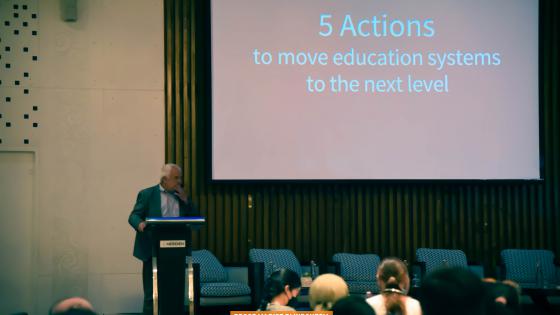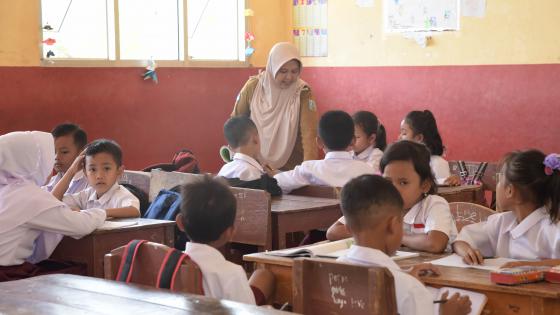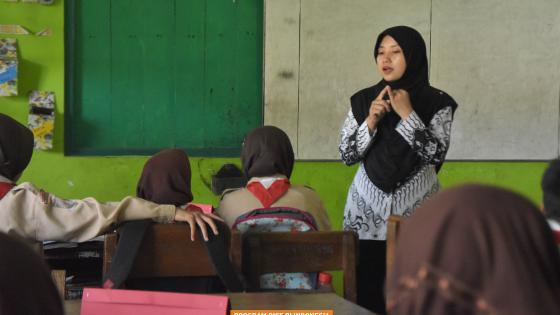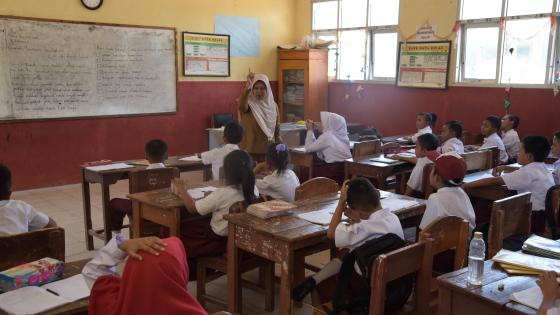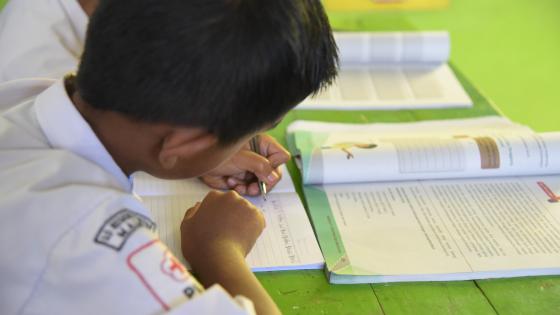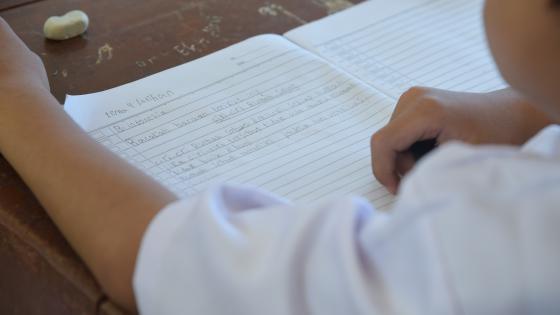Photo illustration: Goldy F. Dharmawan
This article is part of the Teacher's Note series on memorable moments of teaching.
It was my first time working in a public school. I was assigned to teach Grade 4 at a public primary school in Jakarta. I was told that a student with special needs would join my class.
However, I could not meet the Grade 4 students in person on the first day of school. I was a prospective civil servant teacher, so I had to attend basic training for forty days. I was already curious about my students’ profiles, but I had to wait until the training ended before meeting them.
Getting to Know the Students
After completing the training, I returned to work at the school. I got to know all the wonderful 4th graders. I asked them to establish mutually agreed class rules that would be valid the whole year and make targets as well as class activity programmes.
I was startled when the student with special needs had a meltdown in my class. His friends said such incident happens frequently, where the said student screams for no reason and walks out of the class.
I didn't really know what to do at the time. I took notes of that student's behaviour every day. I observed his activities, and my notes indicated that his behaviour was different from children in general.
After thinking that I had enough data, I tried to discuss the matter with the student’s parents. My suspicion was right; the parents told me that their child had autism and attention deficit hyperactivity disorder (ADHD). This was proven by a letter of statement from a psychologist they showed me.
However, the student’s mother did not want to label her child with the term ‘special needs’. I guessed she tried to protect her child from stigma. In my opinion, it is my duty to serve all children because every child has the right to education. Nevertheless, I needed to adjust my instructional approach specifically for this particular student.
A Special Approach
I started with a personal approach to the special student. I tried to “enter” his world and play and study with him in the class. This approach worked, and the child’s temperament was under control up to the fourth month. However, he still could not focus or keep up with the Grade 4 lessons. I took it as a challenge to tailor my instructional materials for him.
I learn more about autism and ADHD from various sources to better understand the special student. I tailor my instructional materials for him so that he can study comfortably at school. I also arrange for the students to study in groups and rotate the group members every month so they can mingle.
It was indeed difficult at first because the special student could not mingle with his peers and often annoyed his friends. I kept asking the other students to understand their friend’s unique condition. Today, the special student has begun to mingle, although only to a certain extent.
*This Note was written by WI, a primary school teacher in Jakarta.
**All articles published in the Teachers' Notes are the views of the authors. They have been edited for popular writing purposes and do not represent the views of RISE Programme in Indonesia or RISE's funders.


